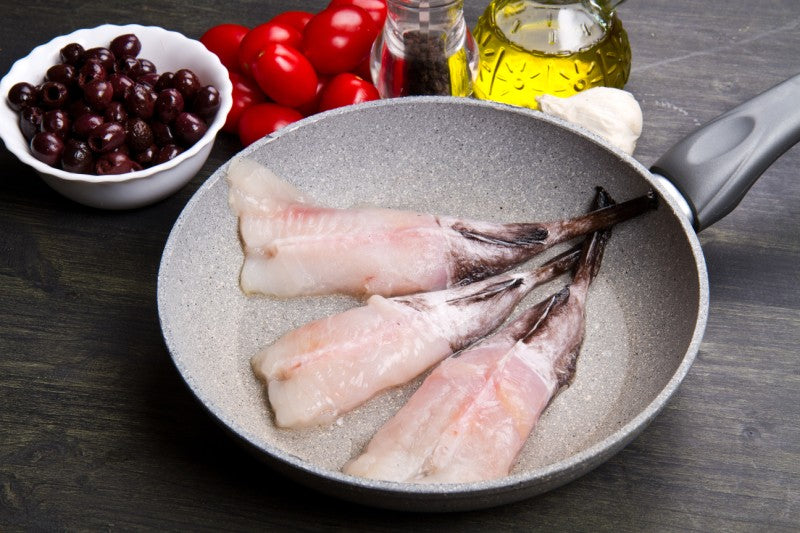
The Bizarre Monkfish
Share
There’s only one word that would perfectly describe the monkfish: ugly. Monkfish belong to the family of anglerfish, which are not typically known for their beauty and charm. Rather, they are best known for their large, gaping toothed maws, and horrific angler-like protrusions, which they use to lure and snatch unsuspecting prey.
We should not be quick to judge, though. Despite its macabre appearance, the monkfish has its own saving grace. It also brings with it an interesting name, the origin of which you may find fascinating. Here are a few tips on how to prepare it; just in case you fancy giving it a try (which you totally should!).
How The Monk…fish Got It’s Name
How this fish got its name is rather obscure. Some suggestions are that it got its name from the cowl-like appearance similar to those worn by monks. But of course, others have better explanations of the fish’s name. Some time ago, monks used to go to docks and ports to ask fishermen for fish they were going to discard. The monkfish was merely a bycatch and considering its ugliness, it was not very marketable to fish buyers. Fishermen would either throw it back into the sea, or just give it away. Little did they know, the meat of the monkfish is comparable to that of a lobster’s! The monks would then return to their monastery with a devil-looking fish in hand, and a nice dinner to look forward later that night.
Monkfish Meat
Most people would agree that the meat of the monkfish has a similar texture and taste to lobster. Because of this, it is dubbed as the poor man’s lobster. Ironically, it is starting to make its name in the culinary world, making it more expensive than it used to be.
Like lobster, the meat of the of the monkfish is found in its tail. The tail is skinned and filleted while the head is often thrown away, although some fishmongers sell the cheek.
Monkfish Preparation
Monkfish is very easy to prepare. The tail is white, firm, and meaty, and the only bone that you have to worry about is the large central bone that can easily be removed. Before cooking, try to check for a grey membrane layered in the skin and peel it off. This is important since the membrane gets tough when cooked.
Monkfish is very versatile, and can be cooked in several ways. It holds its shape fairly well, making it ideal for grilling. The meat can also be roasted, fried, or poached with butter. The cheek can be used to create a flavorful broth. Pair it with the meat, and you can make yourself a nice monkfish stew or soup.
Monkfish is great in absorbing strong flavors, thus, it goes well with parma ham and chorizo.
It is available all-year round, and can be bought whole or filleted. However, it would be best to leave the job in cleaning the monkfish to your fishmonger. Monkfish has an impressive seven layers of skin. Also, having its ugly head leering back at you while preparing it won’t make your job any easier.
Despite its odd look, eating monkfish should not be dismissed right away. Once you get past its ugly face, you’ll see that there’s truly more to this fish than meets the eye.
